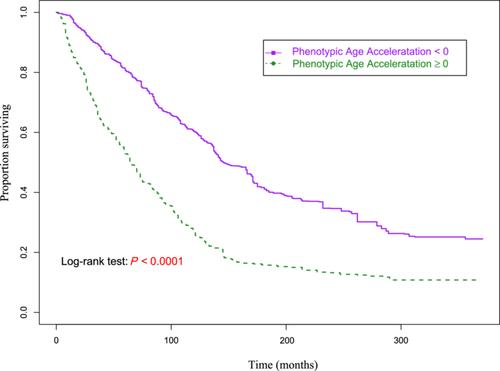Association Between Phenotypic Age and the Risk of Mortality in Patients With Heart Failure: A Retrospective Cohort Study
Abstract
Background
Chronological age (CA) is an imperfect proxy for the true biological aging state of the body. As novel measures of biological aging, Phenotypic age (PhenoAge) and Phenotypic age acceleration (PhenoAgeAccel), have been shown to identify morbidity and mortality risks in the general population.
Hypothesis
PhenoAge and PhenoAgeAccel might be associated with mortality in heart failure (HF) patients.
Methods
This cohort study extracted adult data from the National Health and Nutrition Examination Survey (NHANES) databases. Weighted univariable and multivariable Cox models were performed to analyze the effect of PhenoAge and PhenoAgeAccel on all-cause mortality in HF patients, and hazard ratio (HR) with 95% confidence intervals (CI) was calculated.
Results
In total, 845 HF patients were identified, with 626 all-cause mortality patients. The findings suggested that (1) each 1- and 10-year increase in PhenoAge were associated with a 3% (HR = 1.03, 95% CI: 1.03–1.04) and 41% (HR = 1.41, 95% CI: 1.29–1.54) increased risk of all-cause mortality, respectively; (2) when the PhenoAgeAccel < 0 as reference, the ≥ 0 group was associated with higher risk of all-cause mortality (HR = 1.91, 95% CI = 1.49–2.45). Subgroup analyses showed that (1) older PhenoAge was associated with an increased risk of all-cause mortality in all subgroups; (2) when the PhenoAgeAccel < 0 as a reference, PhenoAgeAccel ≥ 0 was associated with a higher risk of all-cause mortality in all subgroups.
Conclusion
Older PhenoAge was associated with an increased risk of all-cause mortality in HF patients. PhenoAge and PhenoAgeAccel can be used as convenient tools to facilitate the identification of at-risk individuals with HF and the evaluation of intervention efficacy.


 求助内容:
求助内容: 应助结果提醒方式:
应助结果提醒方式:


